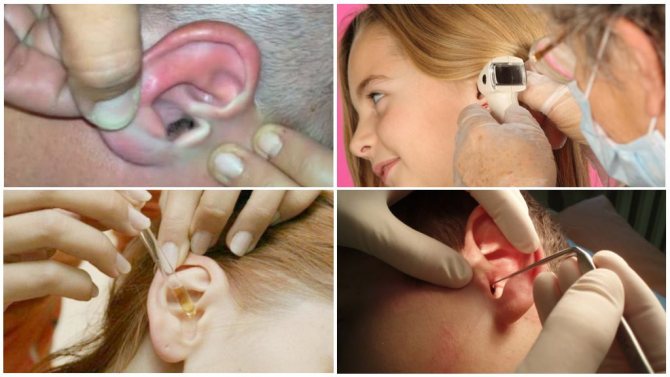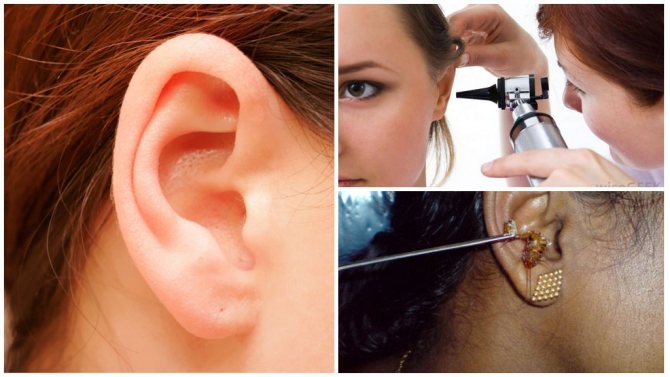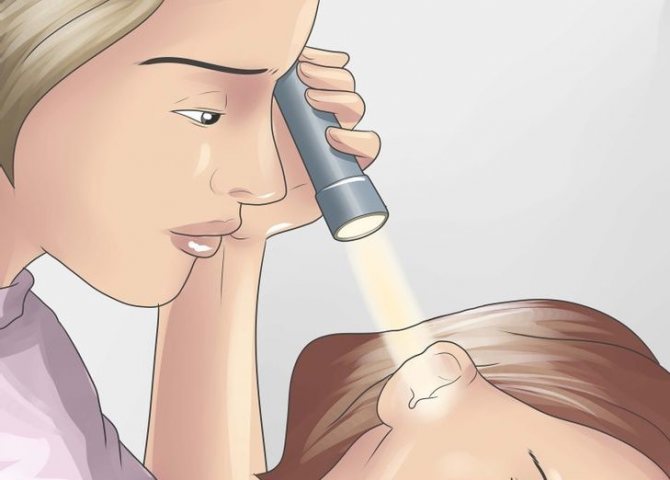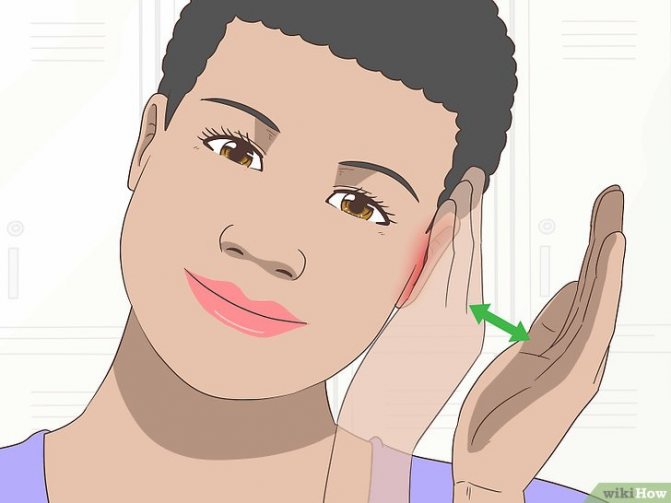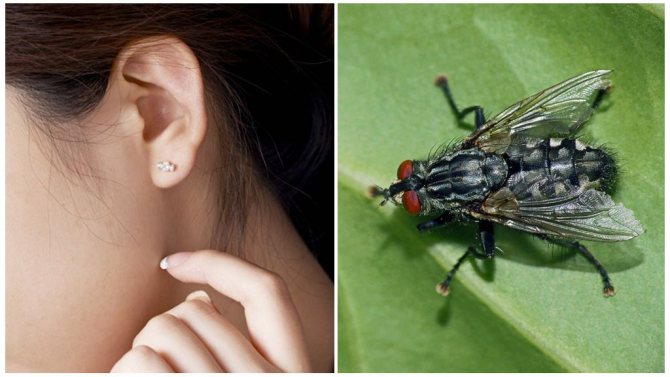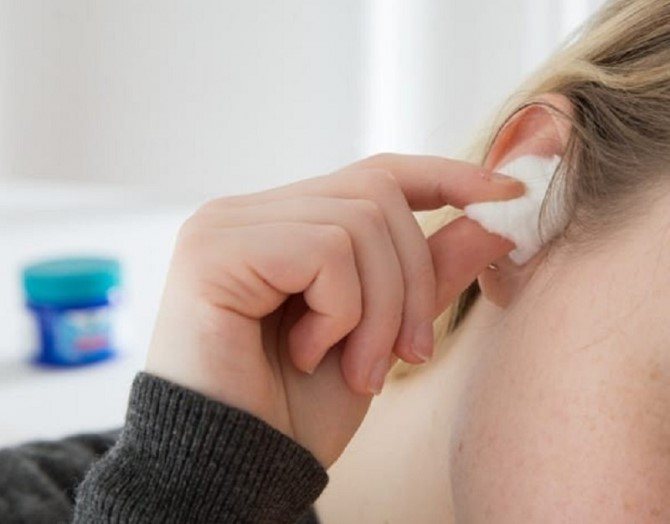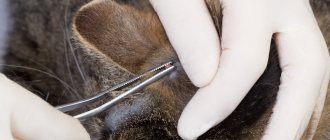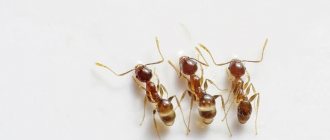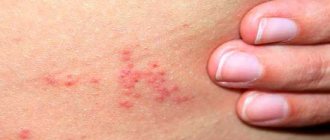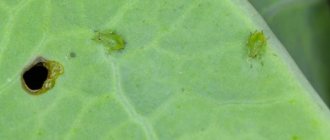The article was checked by an otolaryngologist
Natalya Aleksandrovna Naumova, Medis clinic
The hit of a midge, bug, mosquito, cockroach in the ear does not pose a direct danger to human health, but brings severe discomfort, hearing impairment, nausea, and dizziness. If an insect gets into the ear, then its fussing and rustling literally drives you crazy. It is especially hard for children.
What to do if an insect gets into your ear?
Insects crawling into the ears cause severe physical discomfort to a person and provoke painful sensations.
The procedure in this case will be as follows:
- Killing an insect by pouring a small amount of vegetable oil or plain water into the ear. The liquid should not be hot, but it should be warmed up to the optimum comfortable temperature. The measures taken will disrupt the respiratory functions of the insect and will contribute to its immobilization, which will significantly reduce the discomfort.
- After the performed procedure, you should take a lying or sitting position, slightly tilting your head towards the affected ear.
- Wait until the poured liquid flows out back. Small insects usually go out with her, if this does not happen, then immediate first aid is required.
Precautions
When trying to get an insect out of your ear at home, it is important not to insert anything into your ear, such as a probe or cotton swab. Inserting an object into your ear can push the insect further inward, which could result in serious injury.
The study showed that various complications occur more often in cases when an untrained person tries to get something out of the ear. Potential complications includeNuts and bruising of the outer ear canal, as well as ruptured eardrums.
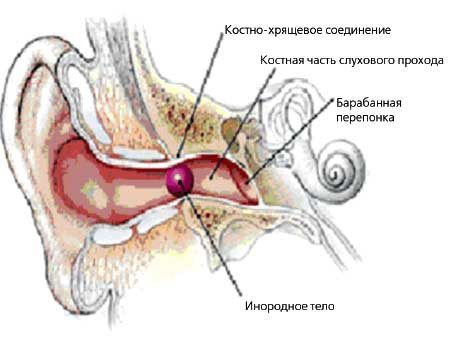
Insect symptoms in the ear
The sensation of an insect in the ear causes much more significant discomfort than the ingress of a non-living foreign body, this is due to its tendency to move and make movements.
This usually provokes the following symptoms:
- Sharp pain, unpleasant tickling inside the ear canal.
- Feeling of stuffiness, the occurrence of tinnitus.
- Severe dizziness, a feeling of nausea and the onset of a gag reflex are the main symptoms that are observed when the receptors of the vagus nerve in the ear canal are irritated.
- Skin necrosis occurs in isolated cases if the insect is capable of releasing irritating chemicals.
- The appearance of edema, in some cases, ear bleeding opens.
- Severe inflammatory processes are extremely rare, as they are a sign of complications. Usually, an insect getting into the ear causes such severe discomfort that a person cannot tolerate it and immediately seeks help from specialists.
A seizure reaction is a rare symptom that usually occurs in childhood: it can be the main sign that there is an insect in the child's ear.
For clarity of the example, below is a photo of an insect in human ears, as well as the external manifestations of this pathology:
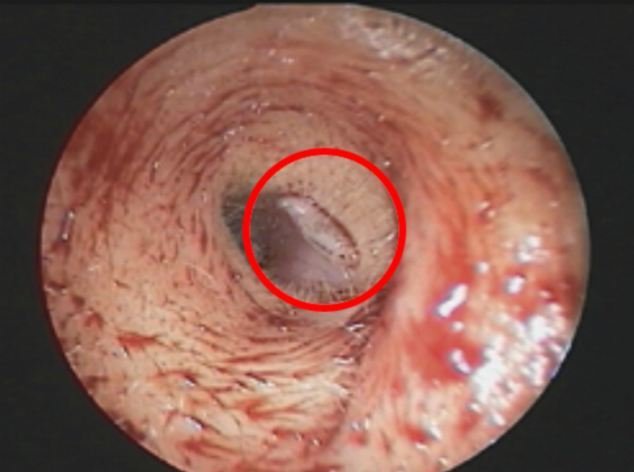

How to get rid of midges caught in the nose?
In addition to the ear, the midge can also enter the nose.With a similar problem, they do not often turn to specialists. In order for such a small living creature to be in the nose, it is enough just to walk along the street. It is easier to get it than it seems at first glance. In order to get rid of the insect in the nose on their own, an adult can try the following:
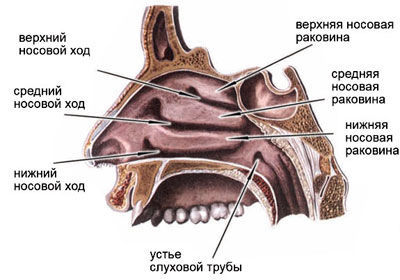

The structure of the nasal cavity
- Breathe deeply, exhaling forcefully through the nose (this method will work only if it is close enough);
- Rinse the nose and nasopharynx with warm salted water (it is advisable to use sea salt for rinsing);
- Blow your nose.
In the event that such a nuisance happened to the child, it is worth trying to stretch the midge with an enema or drip the nose with baby nasal drops. There are also special devices that suck pus from baby noses, which can also be used to solve the problem.
In the event that you still could not cope with the problem on your own, you should seek qualified help from an otolaryngologist who can eliminate it without harming the patient's health.
First aid
What to do if something gets in your ear:
- Conduct a visual inspection, all actions should be carried out as carefully as possible. The auricle is pulled back slightly in an upward direction, and a small flashlight can assist in inspection.
- If an insect is found, you can try to remove it outside., but if it is not visible, then you should not carry out the removal by touch, since during this process there is a risk of aggravating the situation or causing injury. In addition, there is a possibility that the insect will try to bite if it tries too actively to influence it.
- The affected person's head must be turned so that the ear is pointing up. A source of illumination is placed opposite it, which can attract an insect, after which it will get out on its own, going into a bright light.
- If the described measures did not help to solve the problem, then a small amount of vegetable oil or warm water is poured into the ear, after which it is necessary to wait for the death of the insect. This usually takes at least 2-3 hours.
- The ear is additionally washed with a syringe, but if the dead insect still did not come out, then you need to seek professional medical help, without waiting for the onset of inflammation.
Tired of pest control?
There are several proven methods:
- A syringe or a syringe, a rubber bulb is filled with water. Tilt the head down with the damaged ear, pour water. In this way, you can kill the insect, wash it out of the auricle. The water should be warm.
- If an insect has climbed into the ear, any vegetable oil will help get rid of it. Warm up slightly, drip 5-10 drops into the affected auricle. A minute later, they tilt their head, lie down with their sore ear down. Within 20 minutes, the oil is poured out, with the insect.
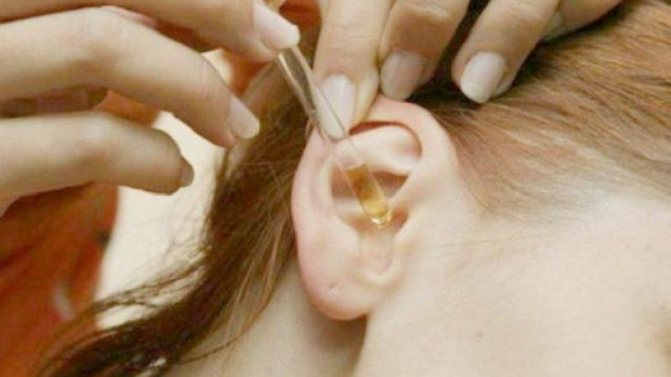

In most cases, these methods will help solve the problem. If the insect does not completely fall out, it will approach the edge. From there, you can easily get it out with tweezers.
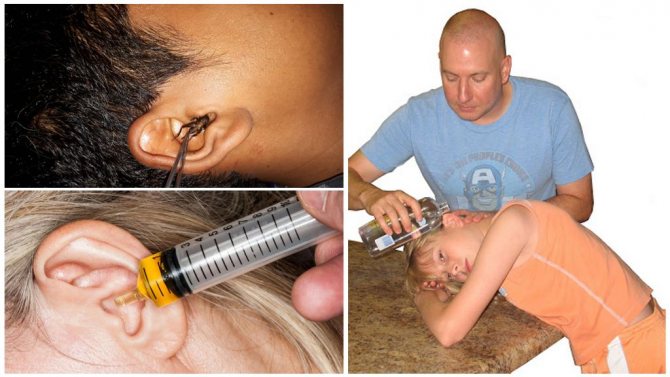

Removing an insect from the ear
Are there cockroaches, mice or other pests in the country or in the apartment? We need to fight them! They are carriers of serious diseases: salmonellosis, rabies.
Many summer residents are faced with pests that destroy crops and damage plants.
Removing an insect from the ear
An insect in the ear is a common problem that no one can protect against.
In some cases, you can try to take independent measures, but sometimes it is not possible to remove a foreign body without contacting specialists. All scenarios are discussed below.
Folk ways
You can use the following methods for self-extracting an insect:
- Tilt your head towards the affected ear, grasp the edge of the auricle with your fingers and shake it slightly. Often, the insect simply falls out, if it has not yet managed to get deep into the ear canal.
- Provide the insect with the ability to exit the ear on its own if it has not gone deep. To do this, you should not make sudden movements, as well as bring your hand or any objects to your ear so as not to frighten him.
- Ear rinsing with a pipette or syringe, while the head must be kept in such a position that water flows out freely and flushes the insect. This method should not be used if there is a suspicion of damage to the tympanic membrane, as exposure to moisture can aggravate the situation.
- Instillation of mineral oil in the ear. Usually just a few drops are enough to kill the insect. Such measures are most relevant if there is a threat of getting bites.
Preparing to remove the insect
Before performing any of the described actions, the following preparatory measures must be taken:
- Diagnostics of the situation and determination of the causes of the discomfort that has arisen. Not in all cases, pain in the ear indicates the presence of a living foreign body in it. How to understand that there is an insect in the ear is described above.
- Keeping calm, which should be expressed in the absence of sudden movements and attempts to remove the insect out with the help of fingers or any tools. This can cause it to go deeper, increasing the risk of nerve damage.
- Locate the insect by examining the ear and the depth of penetration. If it is in the immediate vicinity of the eardrum, then it is recommended not to take any independent action so as not to cause injury.
- Before performing any manipulations, you must take a comfortable position., which will provide the person carrying out the removal, get unhindered access to the ear, and the insect to leave the trap.
Preventive measures
Is it possible to avoid getting an insect in a child's ear and nose at all? Can any preventive measures be used? In most cases, it is unrealistic to protect the baby from flying and crawling bugs and spiders, since in summer they are almost everywhere.
However, if you are walking with your child into the forest or going to the country house, it is important to worry in advance about his safety from all sides. Wear long sleeves with tie-edges. The baby head can be protected with mosquito nets, under which no one will fly in.
Another way is to purchase a special insect repellent spray or ointment that is designed for baby skin.
The above methods are quite simple and feasible at home. If you still could not get an insect or other foreign body out of a child's ear or nose, consult a doctor. And remember that the penetration of the bug does not threaten the life of the baby, so do not panic!
Can a person avoid getting midges in the ear and nose? Are there measures to prevent such problems?
Mosquito net
Many species of midges have been found around the world. Some regions recommend wearing long-sleeved clothing with drawstring edges to protect against them. They urge to protect the head with a mosquito net, to fly under which it will definitely not work.
Modern companies specializing in insect control produce special products in the form of creams and sprays that repel insects. The smell, felt only by insects, keeps them at a decent distance from humans.
In some cases, it is simply impossible to provide absolute protection against insects. You need to understand that the penetration of a midge into the ear or nose is a situation that does not threaten human life (at least in temperate and cold climates), so do not give in to panic.
The methods described above are extremely simple and applicable in a domestic environment. In the event that it was not possible with their help to get the midge, you should still visit the hospital.
Recently, Internet users are worried about questions not only about how to get an insect out of an ear or nose that has managed to fly there, but also about whether it will bite and lay eggs. These questions are inspired by information about how certain species of insects behave and reproduce in hot climates.
Burying the ear with camphor oil
You should be afraid of bites if a person starts to panic, unsuccessfully trying to help himself with objects and methods that are not suitable for this task, which will scare the insect. That is why you need to first drip a liquid into the ear that kills it or makes it crawl out. Many species of midges do not bite at all.
Midges that live in temperate and cold climates do not use the internal environment of the bodies of other animals for reproduction. Small creatures, such as fruit flies, who are more likely to find themselves in similar situations, need rotting vegetables and fruits to lay eggs, not a human body.
Going to hot countries, it is worth inquiring about the types of insects that live in a particular area, and their features.
Post-insect removal
After a successful removal, you must also take certain measures, which will be as follows:
- Carrying out a visual inspection of the removed insectthis will help make sure there are no parts left inside the ear. The presence of even a small foreign object of this type can provoke acute inflammation or cause a dangerous infection.
- Do not exercise too much physical activity immediately after removal., as well as make sudden movements. Washing the ear canals and the procedure for removing a foreign body itself cause some discomfort, and can also provoke side effects in the form of dizziness.
- You must carefully consider your own condition after the procedure. Fever, hearing loss, persistent pain, or swelling are alarming symptoms that may indicate infection or injury. If you feel unwell or in any doubt that the procedure was successful, you should not postpone visiting a qualified otolaryngologist.
Visit to the ENT doctor
The need for a visit to a specialist may arise in the following cases:
- The impossibility of self-removal of the insect.
- Keeping the removed insect particles in the ear.
- Development complication, persistence of discomfort.
- Preventive measures after self-removal.
Treatment
The elimination of the problem by a specialist is carried out according to the standard scheme, which consists in performing the following actions:
- Pre-killing the insect with ethyl alcohol or petroleum jelly, if it is still alive.
- Gentle removal of the insect with a special medical instrument.
- Antiseptic treatment, excluding the possibility of exclusion.
Diagnostics
In some cases, a person may not notice the moment an insect enters the ear, therefore, confirmation of the diagnosis is required before carrying out any medical manipulations.
To do this, apply otoscopy, allowing you to assess the condition of the ear canal and tympanic membrane, quickly identifying a foreign body.
The strong discomfort that is present when an insect enters the ear makes people seek medical help as soon as possible, so the development of dangerous complications is virtually excluded.
The main real threat is self-injury when trying to pull out a foreign body, especially if various foreign and sharp objects are used. Given the high risk of damage to the eardrum, which can lead to complete hearing loss or infection of areas located near the brain, it is better to entrust all such operations to a qualified specialist.
General information
Like foreign bodies in the pharynx and nose, the foreign body of the ear is most often diagnosed in children. During the game, the child himself introduces a foreign object into the external auditory canal. It's good if he tells his parents about it. Otherwise, a long-term object in the ear leads to the development of inflammation. In adults, a foreign body of the ear occurs at random. Often, the cause of a foreign body of the ear is various kinds of injuries, as a result of which earth, sand, a piece of glass, a fragment of an exploded projectile, a bullet, etc. can get into the ear. In this case, the foreign body of the ear can be located not only in the external auditory canal, but also in the tympanic cavity or in the inner ear. Elderly people with severe hearing loss may have batteries and hearing aid parts with a foreign body in the ear.

